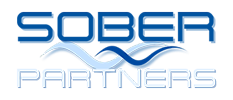Interventions
Drug & Alcohol Interventions in Orange County CA
Very rarely does a client who is actively drinking or drugging themselves to death go online, look for a professional Interventionist and call them asking for help. Just doesn’t happen like that. Usually, a family member or business colleague noticing a self-destructive streak taking place, tries to confront the individual only to be demonized and in many cases blamed for the addicts behavior.
It’s chaotic, sad and truthfully to an individual who doesn’t have a drinking or drug problem, it just doesn’t make any sense.
Our client’s friends and family struggle to be helpful but find that an alcoholic or addict doesn’t respond to logic or conventional wisdom.
You’ll probably need help getting this person into Treatment. You need an unbiased professional to get in between the addict or alcoholic and the loved ones to help set some boundaries.
This is where Professional Interventionists at Sober Partners’ Orange County Drug & Alcohol Rehab Centers can help.
The Sober Partners Approach
For us it’s easy. We speak their language and know what they are thinking and feeling.
Our Interventionist’s goal is simple. Get your loved one into Treatment today!
There are formal models of Intervention and our specialists are familiar with them all however, our experience has shown that each Intervention is unique and usually requires a combination of strategies.
An Intervention starts with a phone call to us. We get the facts of what is occurring and plan a strategy before we arrive. Many times we will meet with the client alone and leave for our Orange County Detox and Rehab Facilities in under an hour. Other times we may stay in town and handle this process in a day or two.
Call us now for a brief consultation to see how we can help you get the ball rolling.

